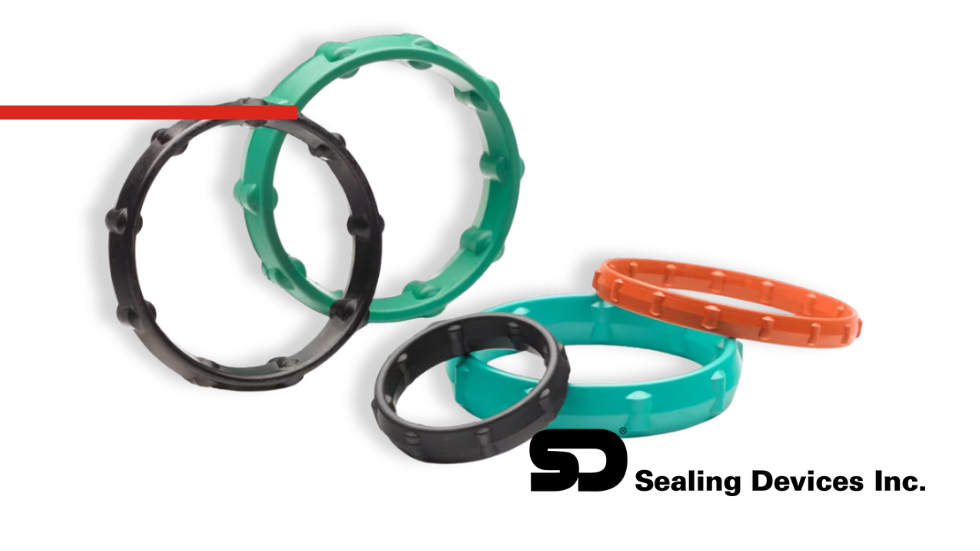Designing Reliable O-Ring Face Seals: A Practical Guide
Choose the right compound, design for controlled axial squeeze, manage plate gaps, specify smooth/flat sealing lands, assemble with care, and validate early. We can also make surface finish recommendations depending on the media to be sealed. Sealing Devices can help you go from concept to production with Parker-grade materials and fast application support.
What is an O-Ring Face Seal?
A face seal is a groove machined to the top or bottom of a flat plate where the O-Ring is sealed on the top and bottom surface not the inner or outer diameter. When the mating cover is bolted down, the O-ring is squeezed in the axial direction to create a static seal. Groove depth, width, and surface quality are the key levers for performance.
Step-by-Step Design Checklist
-
Start with the environment (then choose the compound)
Define media, temperature range, pressure/vacuum, exposure to ozone/UV, washdowns/solvents, and any cleanliness or low-outgassing needs. From there, select the elastomer family and durometer (e.g., NBR, FKM, EPDM, Fluorosilicone, FFKM, Silicone, Neoprene) that best matches your conditions.
-
Pick the cross-section and size
Face seals usually use standard AS568 O-ring sizes but Sealing Devices can offer other standard or customer sizes if needed. Larger cross-sections are more tolerant of flatness variation and can be easier to seal, but they require deeper/wider glands and higher clamp loads. Balance space, squeeze target, and your fastener strategy.
-
Engineer the gland for controlled squeeze
- Depth sets axial squeeze → sealing force.
- Width provides space for the compressed O-ring plus volume changes from temperature or media swell.
- Edges with corner breaks/fillets reduce cutting or nibbling during assembly.
- Volume fill: leave expansion room at high temperature; avoid overfilling the groove.
-
Manage plate gap & extrusion risk
Any clearance between the faces becomes a potential extrusion gap under pressure. Reduce risk by:
- Minimizing gap with a robust fastener pattern and stiff cover design,
- Choosing higher durometer when pressures climb,
- Adding anti-extrusion (backup) rings if needed,
- Verifying against your peak pressure and temperature during testing.
-
Specify surface finish and flatness
- Target a smooth sealing land (commonly 32 µin Ra for liquid service, and 16 µin Ra or finer for gas and vacuum service).
- Keep machining lay circular and avoid radial paths from the inner and outer edges that could leak.
- Ensure flatness across the seal path so minimum squeeze is maintained.
-
Control the tolerance stack
Axial squeeze is sensitive to accumulated variation: groove depth, cover thickness, gasket shims, fastener stretch, and thermal growth. Use a worst-case analysis (not just nominal) to keep squeeze within spec across the full operating range.
-
Assembly best practices
- Lightly lubricate (use a compatible lube) to cut friction and installation damage.
- Deburr and radius the groove entry.
- Use a cross/star torque pattern to seat the seal evenly.
- Consider alignment pins for maintenance lids to protect the sealing land.
-
Validate early
Prototype on representative hardware and test: pressure cycling, temperature cycling, and media soak. Early testing reveals extrusion, compression set, and leakage behaviors long before field use.
Common Mistakes to Avoid
- Oversqueezing to “be safe” (accelerates compression set and shortens life).
- Ignoring plate gap at high pressure.
Work with Sealing Devices
As a long-time Parker distributor and converter, we pair catalog science with application know-how:
- Rapid sizing & gland guidance for your cross-section and hardware constraints.
- Material selection from cost-effective NBR to high-performance FFKM—including low-outgassing and specialty compounds.
- Prototype to production with application samples, kitting, color-coding, and clean packaging.
- Beyond O-rings: press-in-place (PIP) seals, die-cut/molded gaskets, and custom profiles matched to your assembly method.
